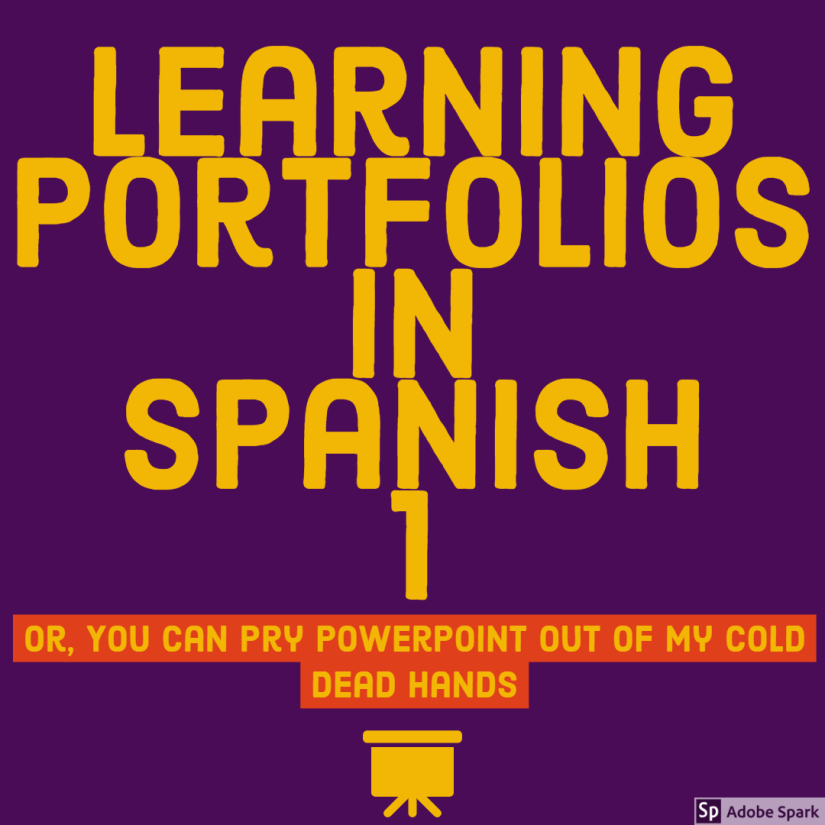Do you follow Bill Ferriter (@plugusin) on Twitter? I had the pleasure of meeting him at a conference this summer and attending his sessions on EdTech and self assessment. Here’s one of my favorite Bill Ferriter quotes:
So I began my portfolio experiment last year. I chose Seesaw as our portfolio platform on a whim after reading a blog post raving about it. As the semester went on, issues began to arise highlighting the fact that Seesaw was not passing the toaster test – while it had lots of nice features, it was not doing exactly what I wanted it to do. Here’s what I wanted in a portfolio:
- A place to collect student work and reflections on their learning and growth, including audio, video, pictures, and text
- Privacy – the student controls who sees it, if anyone, other than me
- Ownership – the student shares it with me, but it is their collection of work and they retain control of it to look back on later, or to share with others to show their growth
Seesaw checked off number one, and we figured out how to adjust the post settings so videos were not automatically shared with the class (oh, the teenage horror!), but the ownership aspect was non existent – I was in control of all content submitted to Seesaw. Students didn’t have a username and password to sign in, but needed a QR code or passcode from me every time their browser data was erased. Oh, and the codes expired every hour, so I couldn’t post the code on Schoology for all time. In practice, this meant that once they compiled their artifacts in Seesaw, they might not be able to access them again. I’m not trying to hate on Seesaw – it has a lot of cool features, and the privacy settings and login system would work really well for elementary schools. Just, for me, it wasn’t meeting my needs.
Cue Powerpoint, the classic presentation tool teachers love to outlaw. Honestly, one of the most useful skills I learned in the EdTech class I took for my masters degree was how to create a narrated PowerPoint and export it as a video, but PowerPoint has been banned for every single assignment I’ve had for my EdS in Edtech. For why, professors? For why??? I mean, I get it, you want me to learn a new tool, but if Powerpoint does exactly what I need, why do I have to do a project in Hyperstudio when literally no one uses it, it requires a special software download, and I’m not allowed to install software on my work computer? <endrant>
Powerpoint allows for video, audio, images, and text (although inserting the video may require a rinse cycle in CloudConvert), and allows students to share with me and anyone else they choose, while still retaining control over their work. Toaster test? Passes with flying colors. Sorry, grad school professors, but in this case, PowerPoint really is the best tool for the job.
If you want it, here is the PowerPoint portfolio template I gave to my students. For unit 1, they have a video, two Explora Español activities, and a learning reflection.

since my kids are using Google Chromebooks, would this work as a Google Slides presentation?
Sure! I’m not sure how embedding audio and video will work in slides – they would probably need to upload video to youtube as an unlisted video. Once it’s on youtube, it’s really simple to embed in slides.